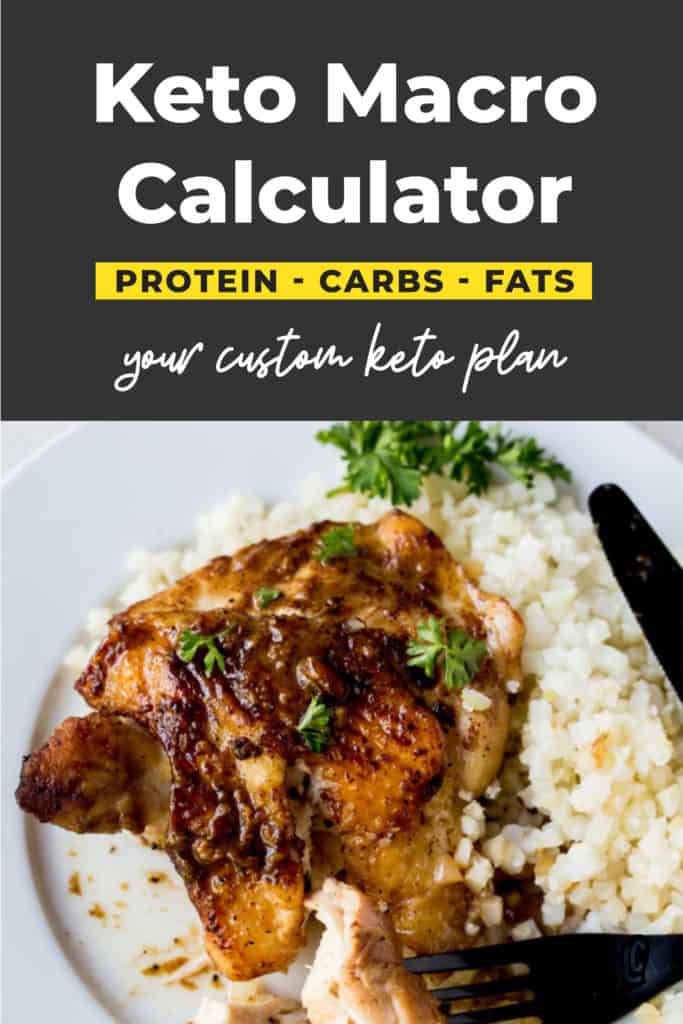Keto Macro Calculator
Fill in your information below to find out how many calories, carbs, proteins, and fats you should be eating per day to reach your goals, whether you want to gain mass or lose weight.
Make sure to watch Matt in the video below as he takes you through the process of using the macro calculator and explains what all the numbers mean.
Note: If you are having trouble viewing the below Keto Calculator, you may need to temporarily disable your ad block software.
Understanding Your Keto Macros
Calculating your macros is an important first step in your keto success journey. You could take a simpler route, and just keep your carbs under 20g per day, or you could get serious about your protein, fats, and calories. Do what works for you and your weight loss goals.
What is my body fat percentage?
If you don't know your body fat percentage, make an estimation using these images. By using body fat percentage, we can calculate a more accurate macro ratio for your ketogenic diet.
What is Basal Metabolic Rate? (BMR)
This is the number of calories your body burns just to be alive. The function of your organs, breathing, and thinking all require lots of calories. Most of the calories you burn in a day burn without you even thinking about it.
The Thermic Effect of Food (TEF)
Digesting food requires energy too. If you eat 1900 calories a day, about 190 calories will be used just to digest the food.
Your Total Daily Energy Expenditure (TDEE)
When using the keto calculator, we recommend you start with the Sedentary option. Unless you work in a construction job or are training for a long distance marathon, you likely aren't burning enough energy to fall into the moderately active or extremely active categories.
If you find that you are losing weight quickly with Sedentary, then you can try increasing your calorie intake or inputting "moderately active" on the keto calculator.
Adjusting your Protein Intake
We recommend a protein intake of .8 grams of protein per pound of lean body mass. If you lift weights or train hard in the gym, you may want to increase your protein intake. Our calculator allows you to tailor your macros to those specific requirements.
What is a Ketogenic Diet?
A ketogenic diet is a high-fat, low-carb diet. On it, you’ll replace starchy breads and sugary cereals with avocados, butter, and fatty cuts of meat. Many people use the keto lifestyle to treat health conditions like arthritis, diabetes, and chronic inflammation.
This all works because of a process known as ketosis, which we’ll explain below. Beyond the health benefits we’ve already mentioned, it also provides:
- Sustained energy levels
- Less cravings and reduction in sugar addiction
- Mental clarity
- Satiety (feeling full)
- Reduced inflammation
If this feels somewhat overwhelming, don’t worry — there are ways to track your macros as you eat throughout the day. Try an app like Cronometer or MyFitnessPal that will help you keep your ratios clear, and focus on meal planning whenever possible.
Here’s a quick example of your daily macronutrient breakdown on a keto diet when eating about 2000 calories per day:
- 80 calories / 20 grams of net carbs
- 320 calories / 80 grams of protein
- 1200 calories / 133 grams of fat
Learn more over at our Beginner's Guide to the Ketogenic Diet.
How to Stay in Ketosis
Being in a state of ketosis means you're burning fat for fuel instead of carbohydrates, but the moment you exceed 5% of carbs for energy, your body will switch back to burning sugar.
In some cases, if you've been fat adapted for a year or more, your body might be able to stay in ketosis more easily, even if you eat something higher in carbs occasionally. Fat can become your body's preferred fuel source, but for the majority of people, a cheat meal will knock them out of ketosis.
The easiest way to stay in ketosis is to eat keto friendly foods and follow the standard keto macro ratios. If you do eat some carbs and are no longer in ketosis, just get back on the keto diet and within a few days you should feeling all those fat burning effects again.
How to Build Muscle on a Keto Diet
Some people believe carbs are a necessary macronutrient for building muscle, but you can build muscle on a keto diet! If you want to build muscle, eat in a calorie surplus and lift heavy weights. There are plenty of ketogenic body builders online who can provide more information on training and meal plans for anyone wanting to achieve some keto gains.
Physical Activity on the Keto Diet
Physical activity is important for your health and well being, but it's best not to think of exercise as a weight loss tool. "Eat less, move more" to lose weight is what many of us have been told our whole lives if we wanted to lose weight. While this might work short term, it's not usually sustainable. The more you eat, the hungrier you get, making it the harder to cut calories. I's a vicious cycle that can end up damaging your metabolism.
Many people have found weight loss success without any physical activity on the keto diet. Once cravings are under control and hunger is diminished, controlling the calorie intake is easy. Especially when the foods are fatty, filling and tasty.

Written by
Matt Gaedke
Matt is a former college basketball player turned computer engineer who discovered his passion for health and nutrition after cutting sugar from his diet in 2016. That year he founded KetoConnect with Megha in order to share their ketogenic lifestyle through recipes, videos, and educational content. Matt is always seeking to grow and try new things, a passion he shares with his wife and two amazing sons.